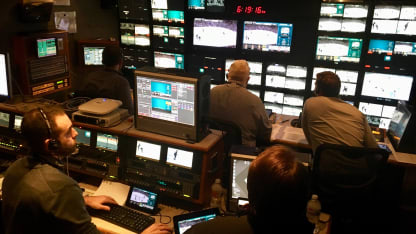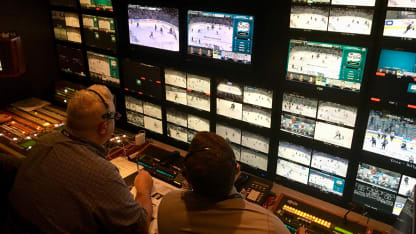Nameplates called "pointers" identified players as they moved, sometimes also giving shift length, skating speed or distance traveled. A rail along the bottom of the screen showed headshots of who was on the ice, with the players' shift length, skating speed or distance traveled underneath. A rail on the right side of the screen showed other information, from shot speeds to offensive zone time, and sometimes an iso cam highlighting a certain player. Gray trails showed the path of the puck and blue trails the paths of players.
"I wanted to make our broadcasts potentially even more compelling and more exciting and enhanced, and particularly focusing on millennials and Gen Z's to create an experience that they can tailor to their own viewing habits, because younger people are using technology differently … " Commissioner Bettman told the audience. "This is all an attempt to connect people to connect people to the game more closely and on their terms."
Asked about public access to the data on NHL.com, Commissioner Bettman told reporters: "It's going to start as a broadcast enhancement, and then we'll take it from there. It's going to have to evolve, because in terms of what data people are finding useful, it's something we're all going to learn together."
The system might be used to enhance officiating and video review someday as well.
"We're going to continue to use technology to get it right, and the Puck and Player Tracking at some point, particularly as it relates to the puck, may be able to have an application where we know exactly where the puck is, so you don't have to worry about distortions from camera angles," Commissioner Bettman told the audience. "We'll know because of the data points whether or not the puck fully crossed the line.
"So those are things that we're going to continue working on, because at the end of the day, our officials have the toughest job in all of sports. They do a remarkably good job, but there's a human element to all of this, and if we can help them be better, we want to do that."



